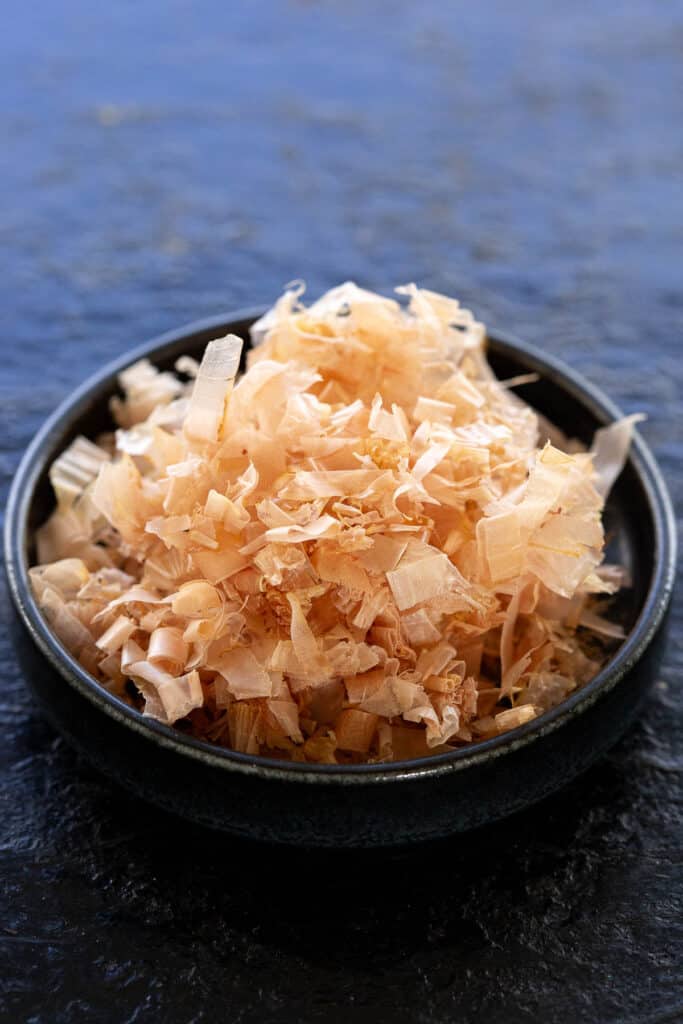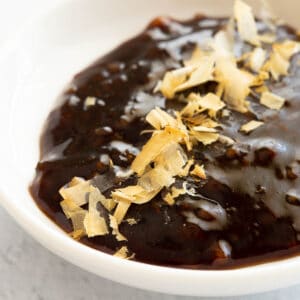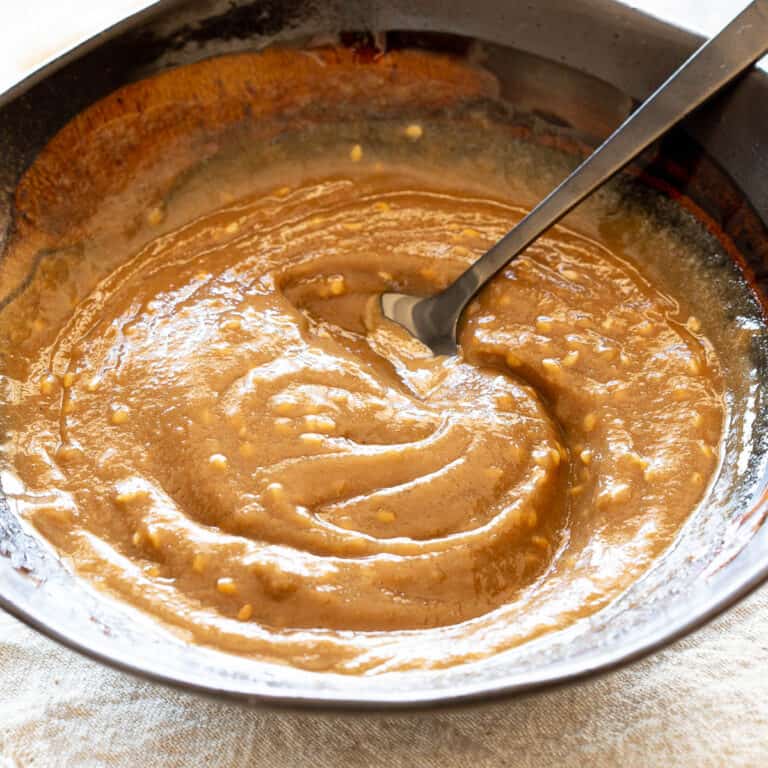12+ Epic Ways to Use Katsuobushi / Bonito Flakes
Find out all about katsuobushi, an essential ingredient in Japanese cuisine that delivers a huge burst of umami flavour. Includes everything you need to know PLUS incredible recipes to use up your dried bonito to the very last flake.
Why We Love This
Katsuobushi is one of our favourite Japanese condiments – it really makes dishes like takoyaki and okonomiyaki shine. We’ll use it in miso soups, simmered dishes, dipping sauces, as a garnish, a seasoning, you name it!
A little goes a long way when you’re first trying the flakes (but you can also stack it on like we do). We are obsessed with bonito – well mainly Laura – but Sarah’s a big fan too.
As a preserved condiment, it lasts for a really long time, so it’s an occasional purchase you can use for ages before you need to restock.
What is Katsuobushi?
Katsuobushi flakes (鰹節 / かつおぶし or dried bonito flakes) are a super popular ingredient in Japanese cuisine, where it is also known as okaka.
It’s most well known for being one of the two main ingredients in dashi stock alongside kombu (dried kelp / seaweed sheets).
You’ll often find it as an optional garnish at Japanese restaurants alongside everyday toppings like aonori seaweed flakes and shichimi togarashi / seven spice powder.
How is katsuobushi made?
The town of Makurazaki in Kagoshima prefecture is the most renowned for making katsuobushi.
The process to make katsuobushi is quite involved and can take anywhere from 20 days, all the way up to over 6 months. Skipjack tuna fillets (also known as katsuo) are simmered, smoked and dried under controlled conditions. During this time the fillets undergo fermentation using a special variety of mould. According to Kinshichi Shoten, the process sometimes needs to be completed by hand over 20 times!
Check out Yusuke Sezaki (瀨﨑 祐介) on Instagram, a 4th generation katsuo maker at Kinshichi Shoten (金七商店), who makes some of most incredible bonito and includes behind the scenes photos and video on how katsuobushi is made.
Traditionally, katsuobushi fillets were finely shaved using a wooden plane known as a katsuobushi kezuriki. You can still buy whole fillets (or blocks), online is easiest but you may be lucky and have a Japanese speciality supermarket that stocks them!
These days you’re more likely to come across it as the iconic pink-brown shavings (which look quite similar to pencil shavings) sold in plastic bags like the image below.
How is it used?
Large, thick bonito shavings are most often used in flavourful soup stocks. These can be removed and discarded afterwards, or repurposed as a form of furikake.
Small, thin katsuobushi shavings are mainly used as a soft, melty, umami-packed garnish.
In addition to the ideas below, it goes well with a wide variety of dishes including noodles and rice, eggs or tofu, and vegetable based recipes.
At home, why not try it:
- As a stuffing in onigiri (Japanese rice balls)
- As a garnish for cold soba noodles or seasoning to homemade mentsuyu sauce
- As a topping for simmered daikon or an addition to soup broths like oden or nikomi udon.
FAQs
Katsuobushi has a mild, smoky umami flavour and aroma. It’s definitely savoury, more like a bacon / smoked fish jerky than truly ‘fishy’. We also love the flaky, melty texture!
This can be a big surprise when you first come across katsuobushi! When it’s used a topping on freshly prepared Japanese dishes, steam and heat can cause the fibres in the katsuobushi to expand or contract in random ways, causing the flaky pieces to move and curl.
Yes you can. Feel free to try some straight out of the packet if you want to!
Katsuobushi is essentially a preserved food, so it will naturally last a long time. We prefer to store it in an airtight container (rather than the plastic packaging) in the pantry.
























